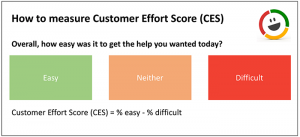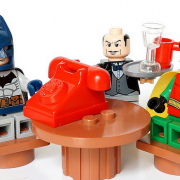Customer Effort Score, the new indicator of the Customer Experience
The new fashion indicator for the professionals of the Customer Experience is the Customer Effort Score (CES). It is a relatively new scale or methodology, originated in 2010. Its goal is that, instead of striving to exceed customer expectations, companies do everything necessary to minimize the effort made by the customer to see their request satisfied.
According to the creators of the CES, this strategy is much more rewarding for people.
The CES was developed by the specialized consultant Corporate Executive Board. And, at its base, the idea is quite daring: loyalty is not tied to satisfaction (well, not as much as previously thought).The debate is a classic: there is no unique and magical indicator. CES is not an exception to this rule, neither was NPS (Net Promoter Score).
To examine the relationship between customer service and loyalty, the consultant conducted a study in a wide variety of contact centers. Respondents were asked if their expectations were not met, if they were met or exceeded. They discovered that the difference between meeting and exceeding expectations does not generate an appreciable increase in customer loyalty. The problem is when expectations are not met.
According to analysts, customers simply expect a satisfactory solution to the problem they have at a given time rather than a superior experience (something assumed by a large number of previous studies).
This means that there is less relationship between satisfaction and loyalty than previously thought. To achieve customer loyalty, rather than exceeding expectations, organizations have to reduce the effort that the customer must make to get their problems resolved. Simply, companies must eliminate obstacles.
What it is meant by effort? Having to move to another service channel, wait long on the phone, call a second time to resolve an issue… and we could continue making a list of well known items.
The CES has the capacity to unite the organization around a simple and relevant concept. However, a better prediction of loyalty requires the combination of different indicators:
–Measure the results internally based on established standards (audits, mystery customer).
–Measure the perception of these results, more simply (NPS, CES) or more extensive (satisfaction study, measurement at the point of analysis of spontaneous feedback).
–Investigate to accurately determine customer expectations.
Surely no metric responds to all situations, although it’s good to be up to date with the new ideas and perspectives. The challenge, as always, is to build and manage a dashboard of the customer experience and identify which are the most valuable for the company.









